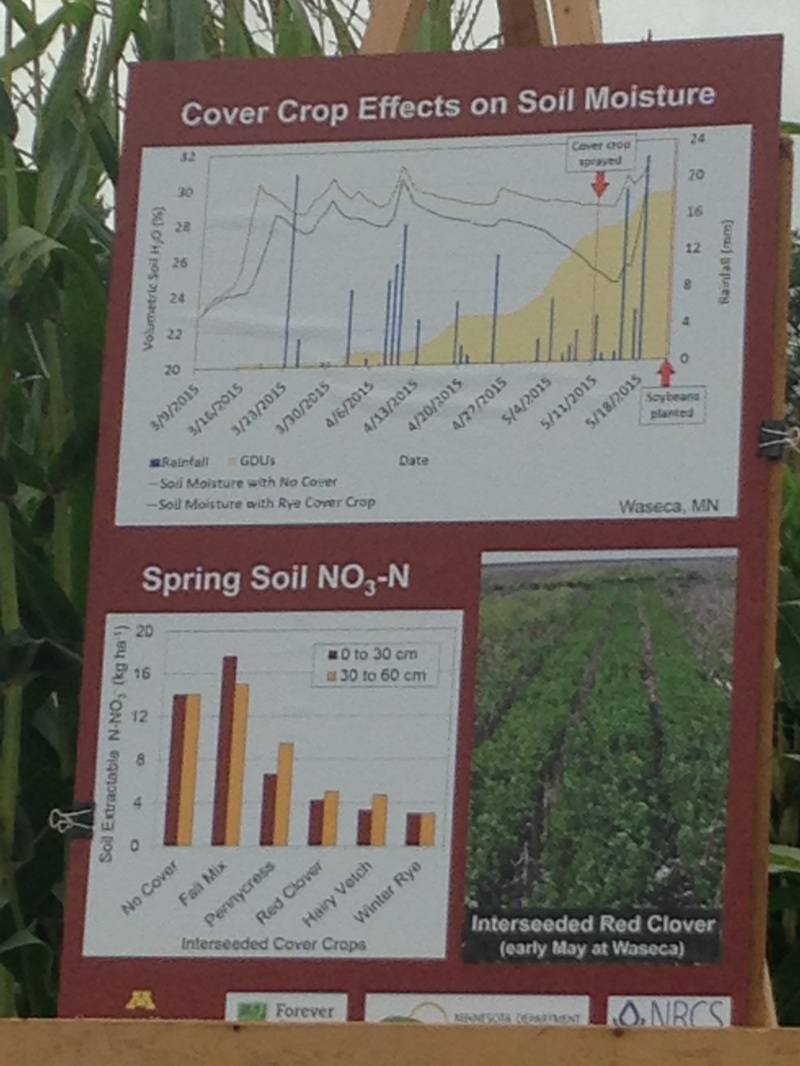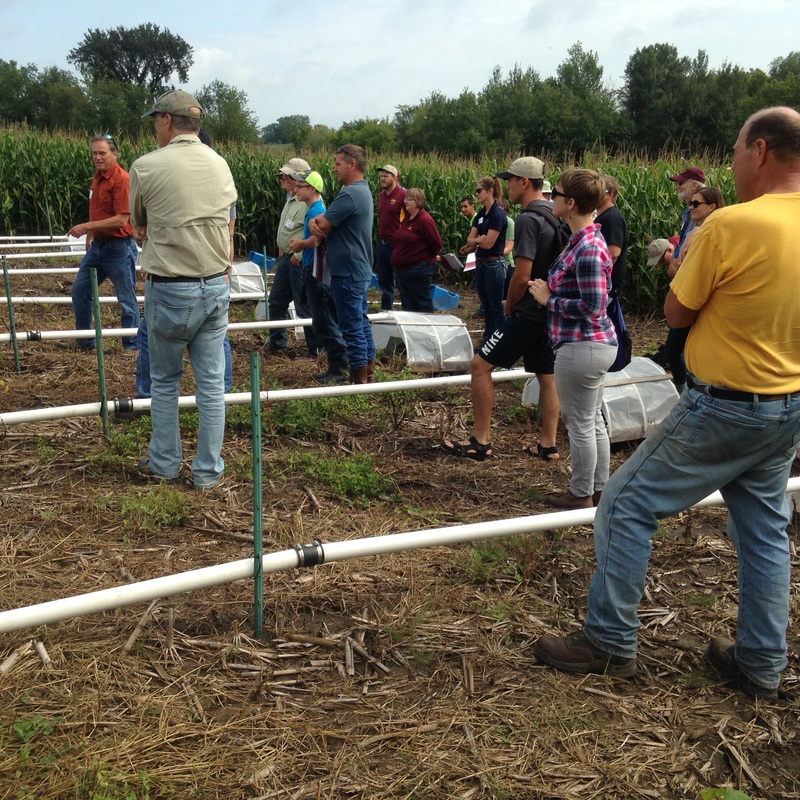 From Brown to Green: Planting Seasonally Bare Farmland for Productivity and Water Quality Benefits Fields of brown soil typically appear after the fall harvest until green cropland appears in late spring. Brown, unproductive farmland lacks plants to reduce water runoff, soil erosion, and nutrient loss such as nitrogen. Excess runoff of water, soil and nutrients impair the quality of watersheds and the Mississippi River. Green farmland all year with dense carpets of cover crops and perennials can mitigate harmful impacts of bare soil and provide a crop. The University of Minnesota (UMN) Extension sponsored a tour of perennial cover crop systems within a corn and soybean rotation. UMN and USDA Agricultural Research Staff answered questions at the UMN Rosemount Research and Outreach Center Field Day Tour on August 24, 2016. Attendees included farmers, agricultural business, government staff and the general public. The tour addressed these topics:
UMN Researcher Dr. M. Scott Wells explained “Greening the brown period” using these methods:
Cover crop establishment in corn and soybeans using grasses or legumes with tolerance to shade and herbicide successfully holds more soil moisture than crops without cover crops. Grasses tested were Hard Fescue and Chewings Fescue. Legumes tested were Kura Clover; Crown Vetch; and a legume mix of kura-, red-, white-, ladino, alsike clover, and birdsfoot trefoil. “Winter Oilseeds as Cash Cover Crops in Corn and Soybean Rotations” considers use of Winter Camelina and Pennycress. These cold-tolerant winter annuals of the mustard family may be economically viable as oil for food and/or biodiesel, and as protein for food and/or animal feed. They have potential as a double or relay crop with corn and soybean. For more information see: http://www.extension.umn.edu/agriculture/ag-professionals/cpm/2015/docs/2015-gesch.pdf Herbicide diversification, rotation and the risk of carryover herbicide crop damage was also discussed. Many Extension weed scientists advise using a variety of herbicides due to the expansion of herbicide resistant weeds. This handout was provided and more information is available from UMN: http://www.extension.umn.edu/agriculture/forages/pest/herbicide-diversification-and-cover-crops/ Soil and water retention on a 9% slope using living mulches significantly reduced soil erosion in runoff water, suppressed weeds, retained nitrates in the soil and improved productivity. The following pictures show measurement and results from alternating rows of conventional and mulched corn. This agricultural tour successfully demonstrated conventional and new crops using experimental equipment and production systems to improve crop productivity, weed suppression, retained nitrates, and improved soil and water quality. For more information, “The Forever Green Initiative: Developing New Perennial and Winter Annual Crops to Enhance Minnesota’s Soil and Water Resources” is summarized here: http://www.forevergreen.umn.edu
5 Comments
3/28/2023 02:45:06 am
Nice project. Keep up the great work!
Reply
12/13/2023 11:20:27 pm
This article highlights a crucial issue in agriculture that often goes unnoticed. The transition from brown to green farmland is essential for protecting our watersheds and water quality, especially in regions like the Mississippi River basin.
Reply
12/20/2023 07:52:23 pm
I find it fascinating how the simple act of maintaining green farmland year-round can have such significant positive impacts on our environment and water quality. It's essential that we recognize the interconnectedness of our actions on the land and water systems. The tour sponsored by the University of Minnesota Extension is a fantastic opportunity for farmers and the public to learn about these practices and their benefits.
Reply
12/26/2023 12:57:11 am
Great Article! Thank you for sharing this very informative post, and I'm looking forward to the latest updates on this important topic. It's crucial that we address the issue of transitioning from brown to green farmland for the sake of water quality and overall environmental health. Keep up the excellent work!
Reply
Leave a Reply. |
| LWV Upper Mississippi River Region | UMRR blog |






 RSS Feed
RSS Feed